Orchid Culture - Motes Notes
by Dr. Martin Motes, from his monthly newsletter and book Florida Orchid Growing
If you like what you see, feel free to leave a donation; just click on the Tip Jar. Thank you!Monthly advice for orchid growers in South Florida. There's lots of information pertinent to North Florida growers too. Subscribe to the monthly newsletter so it will be delivered to you via email each month.
Progress of the Season
After an exceptionally wet start, October has come to an exceptionally dry conclusion. This is blessed relief for our orchids from disease pressure after an unusually rainy patch in early Fall. The warm dry weather of late October has suited both our sympodial orchids allowing them to escape disease as they enter dormancy and our monopodial orchids which continued to grow and flourish in the warmth. The rainy season has extended itself in a benign fashion which suits our orchids well. With climate change this pattern may become more common in future years.Be sure to allow those sympodial plants, in particular those section Dendrobium and section Callista dendrobiums and all of the Catasetinae dry thoroughly. Our vandas are relishing the warmth and the greater swing of day to night temperatures. The shorter days are stimulating those hybrids with V. sanderiana in their background to spike. With the warmer than usual temperatures, Thrips might potentially attack those emergent spikes. The Fall treatment for mites: oil followed by soap, recommended in Florida Orchid Growing will control Thrips as well.
As we delight in the wonderfully cooler weather, we must be mindful that much colder temperatures can quickly arrive. Be sure your plants are protected from both north and west winds. Now is a good time to consult the chapter in Florida Orchid Growing on the temperature tolerance of different genera and species.
It is a great time to plant veggies in South Florida. Man does not live by bread alone; he must also have vine ripened tomatoes.
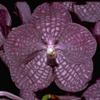
January in Your Orchid Collection
January is somewhat like December but in reverse, with each succeeding day bringing longer hours of sunlight until days are long enough that afternoons return at the end of the month with extra sunshine to warm us after the extra sharp cold snaps. January, like December, is cold and dry, in fact even colder and drier. Dry is good, cold can be very bad. We need to accentuate the positive by especially... read entire article
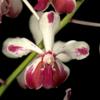
February in Your Orchid Collection
Despite the bloom on the avocados and the burgeoning new leaves on the live oaks, February is not spring in South Florida. Danger of freeze continues past mid month and frost can occur still into March. Even if the weather is balmy, it's too early to let down our guard or take down any protection we have mounted against the cold. The trend however is toward the positive as each lengthening day brings extra hours of warming sunshine... read entire article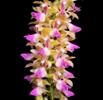
March in Your Orchid Collection
Whilst March never comes in like a lion in South Florida, occasionally it slinks in like a bob cat. Frost is not unheard of in the first few days of the month. The more cold sensitive genera, hard cane dendrobiums, phalaenopsis and vandas may well need some protection even into the middle of the month. Overall, however, March brings us some of the most ideal orchid growing conditions... read entire article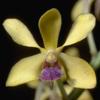
April in Your Orchid Collection
Far from the cruelest, April is the kindest month to South Florida orchid growers. The weather in April is definitely settled into warm, even deliciously hot, with passing cold fronts only adding the delight of a pleasant change in temperature. The clean, bright days brimming with abundant sunlight and the low relative humidity create the high drying potential that orchids love... read entire article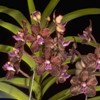
May in Your Orchid Collection
May is a month of transition in South Florida. Early in the month we can expect the driest weather of the year. Because of the clarity of the air and lack of cloud cover, temperatures rise rapidly in the late morning and can reach the upper eighties or nineties by mid afternoon before cooling substantially in late afternoon. Fortunately, over night radiant cooling rapidly dissipates the previous day's... read entire article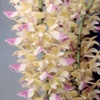
June in Your Orchid Collection
June is the most dramatically tropical month in South Florida. As the southeast Trade Winds blow cool moist air off the Gulf Stream daily, as surely the heating effect of the center of the peninsula percolates up massive thunder heads. The increased cloud cover drawing a veil across the afternoon sun provides much cooling relief for our plants... read entire article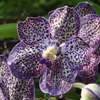
July in Your Orchid Collection
Although it mostly passes unnoticed to millions locked in their air-conditioned bubbles, July in South Florida is quite different from June. While the pattern of afternoon showers built from the moisture of the morning's sea breeze persists in July, the thunder-storms are sharper and shorter. The clouds linger less and the foliage dries more quickly. Less quantity of rain falls in July than in June... read entire article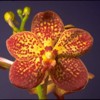
August in Your Orchid Collection
July and August are the two most similar months in South Florida. Most of the advice on watering, disease and pest control in last month's calendar still apply but subtle changes are taking place. Although it may not seem so, as temperatures climb into the low nineties most afternoons, summer is in retreat: each day a little shorter, each night a little longer. With shorter days the importance of watering as early... read entire article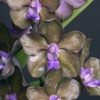
September in Your Orchid Collection
September looms as the only truly dismal month in South Florida. Even without the prospect of the unspeakable 'H' word, September disheartens since it is easily the dampest, dullest month in the year. Although more inches of rain fall in June, more hours of rain occur in the often slow, seemingly endless drizzles of September. Frequently a day or two can pass without so much as a solid hour of truly bright... read entire article
October in Your Orchid Collection
October is a month of change in South Florida. If the Romans had lived here where we do, they would have named this month for their two faced god Janus. Usually around the middle of the month, and certainly by the end of the month, the first strong cold front pushes into South Florida bringing to a close the monolithic heat and damp of summer and ushering in weather as most of the continent knows it, alternating periods of warmer and cooler... continue reading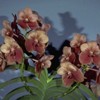
November in Your Orchid Collection
In November we can no longer afford to be dominated by the illusion, so easy here at the northern edge of the tropics, that summer will never end. Although Indian Summer persists for the whole winter in South Florida, November is the month to prepare our plants for those short sharp blasts of cold which are inevitably coming as each successive cold front pushes the overall temperature a little lower... read entire article
